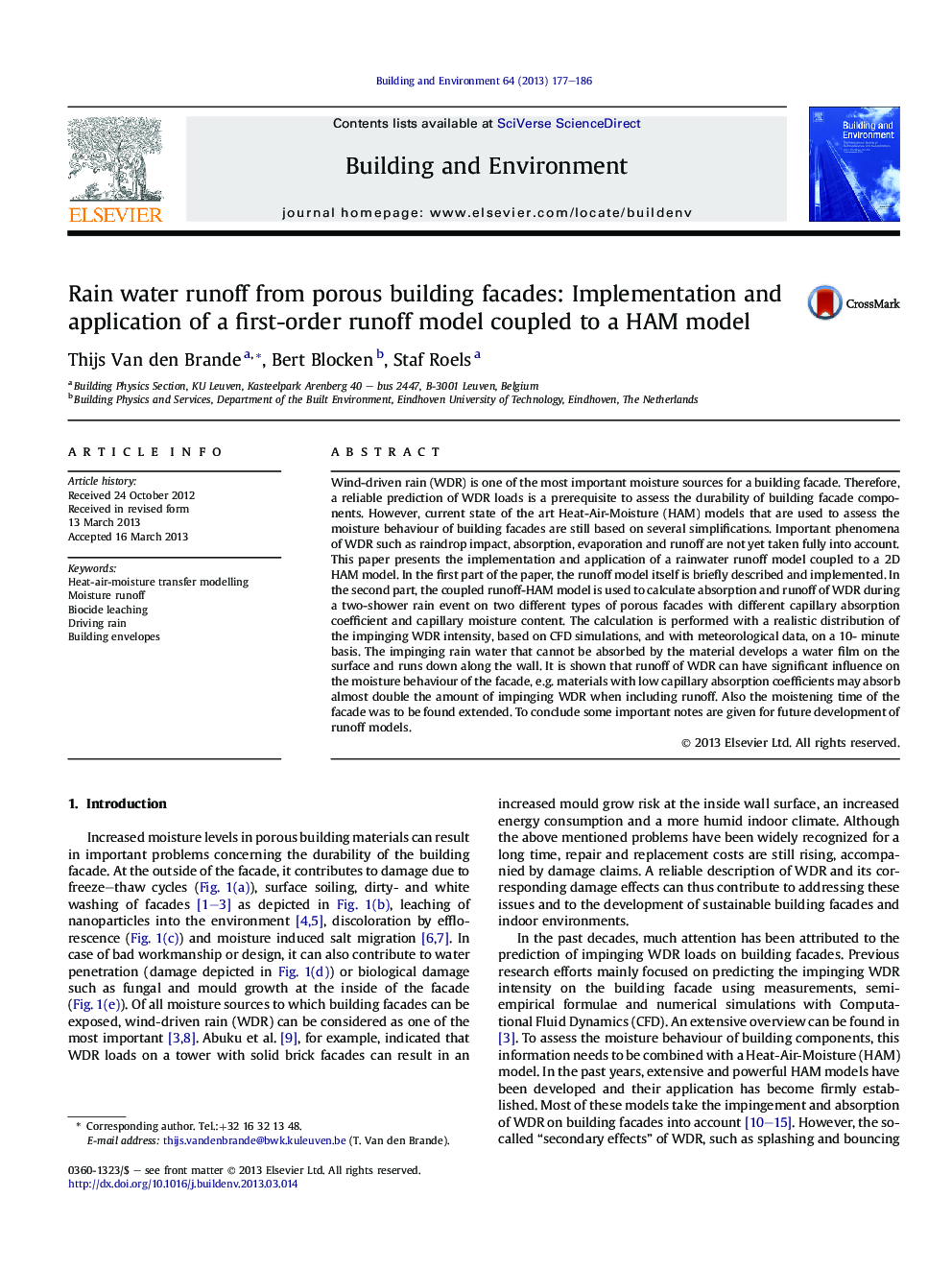| کد مقاله | کد نشریه | سال انتشار | مقاله انگلیسی | نسخه تمام متن |
|---|---|---|---|---|
| 248382 | 502562 | 2013 | 10 صفحه PDF | دانلود رایگان |

• Combination of a state-of-the-art HAM model with a first order runoff model.
• Traditional HAM models underestimate the absorbed WDR by low absorptivity facades.
• Due to runoff of WDR, drying of the facade is postponed.
Wind-driven rain (WDR) is one of the most important moisture sources for a building facade. Therefore, a reliable prediction of WDR loads is a prerequisite to assess the durability of building facade components. However, current state of the art Heat-Air-Moisture (HAM) models that are used to assess the moisture behaviour of building facades are still based on several simplifications. Important phenomena of WDR such as raindrop impact, absorption, evaporation and runoff are not yet taken fully into account. This paper presents the implementation and application of a rainwater runoff model coupled to a 2D HAM model. In the first part of the paper, the runoff model itself is briefly described and implemented. In the second part, the coupled runoff-HAM model is used to calculate absorption and runoff of WDR during a two-shower rain event on two different types of porous facades with different capillary absorption coefficient and capillary moisture content. The calculation is performed with a realistic distribution of the impinging WDR intensity, based on CFD simulations, and with meteorological data, on a 10- minute basis. The impinging rain water that cannot be absorbed by the material develops a water film on the surface and runs down along the wall. It is shown that runoff of WDR can have significant influence on the moisture behaviour of the facade, e.g. materials with low capillary absorption coefficients may absorb almost double the amount of impinging WDR when including runoff. Also the moistening time of the facade was to be found extended. To conclude some important notes are given for future development of runoff models.
Figure optionsDownload as PowerPoint slide
Journal: Building and Environment - Volume 64, June 2013, Pages 177–186